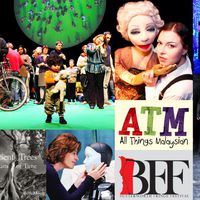Exhibition: "A Wedding Day in Autumn" | Korea
 The National Hangeul Museum, Seoul, Korea, an ASEMUS member, presents an exhibition entitled "A Wedding Day in Autumn, 1837 - Hangeul Materials Related to Princess Deogon", which can be visited between 13 September and 18 December 2016.
This exhibition introduces materials written using the Hangeul alphabet, on Princess Deogon (1822-1844), who is the last princess of the Joseon dynasty and the youngest daughter of King Sunjo (r. 1800-1834) and Queen Sunwon (1789-1857).
"A Wedding Day in Autumn, 1837" presents letters and books that have never been open to the public before. Visitors will be able to feel the mother’s love inscribed in each and every character of the Hangeul materials on the wedding day 180 years ago. Further in-depth research is expected on the Hangeul materials which have not yet been thoroughly studied.
The exhibition consists of two parts, the first focusing on the wedding ceremony, and the second one addressing Princess Deogon's life after the wedding.
The National Hangeul Museum, Seoul, Korea, an ASEMUS member, presents an exhibition entitled "A Wedding Day in Autumn, 1837 - Hangeul Materials Related to Princess Deogon", which can be visited between 13 September and 18 December 2016.
This exhibition introduces materials written using the Hangeul alphabet, on Princess Deogon (1822-1844), who is the last princess of the Joseon dynasty and the youngest daughter of King Sunjo (r. 1800-1834) and Queen Sunwon (1789-1857).
"A Wedding Day in Autumn, 1837" presents letters and books that have never been open to the public before. Visitors will be able to feel the mother’s love inscribed in each and every character of the Hangeul materials on the wedding day 180 years ago. Further in-depth research is expected on the Hangeul materials which have not yet been thoroughly studied.
The exhibition consists of two parts, the first focusing on the wedding ceremony, and the second one addressing Princess Deogon's life after the wedding.
Part 1 : The Wedding Ceremony of Princess Deogon in 1837
The Princess got married to Yun Uiseon (1823-1887), the son of Yun Chiseung at the age of 16 in 1837. During the Joseon dynasty, a princess would normally get married around 12 years of age. However, her father, King Sunjo, passed away in 1834 when she was 13, which was why her marriage was delayed by three years of mourning period. Queen Sunwon took charge of her daughter's wedding preparation. What she had prepared reveals the love of a mother who has put every effort for the wedding of her youngest and the only surviving daughter. Part 1 of the exhibition introduces the list of wedding gifts, furniture and kitchen utensils necessary for housekeeping that Queen Sunwon prepared for her daughter, Princess Deogon, and her son-in-law, Yun Uiseon. These items include sewing tools like scissors and buttons, kitchenware like rice bowls and plates, and stationery items, such as brushes and inkstones. Museum-goers can also see some of the actual wedding items that have been preserved, such as norigae decorations.Part 2: The Life of Princess Deogon after Marriage
Princess Deogon's home was located in Jeo-dong (at present, Jung-gu district in Seoul), hence the palace known as 'Jeo-dong-gung'. During the Joseon dynasty, a married woman should live with her in-laws in principle. However, a princess could start her married life in a new house separate from the in-law's house. Today, various books which Princess Deogon brought from her mother's home and writings which seem to be her own are available.
In addition, it was difficult for Princess Deogon to make frequent visits to her mother after marriage. This is why Queen Sunwon sent many Hangeul letters to her daughter and son-in-law, and it is these letters which make it possible to guess what Princess Deogon's marriage might have been like.
Another interesting part of the exhibit are specially-prepared audio and video items. In every corner of the museum, visitors can learn more about the court wedding and the detailed stories surrounding the letters by using tablets and other IT displays that use augmented reality (AR).
The Director of the National Hangeul Museum Kim Chulmin said, “The list of wedding items for Princess Deogon is being open to the public for the first time thanks to this exhibition, and this is so far the only existing document that we have found that shows the list of wedding items for a Joseon princess.”
“This exhibit not only shows the motherly love of the queen for her daughter, but also the life of elegance enjoyed by the royal Joseon family,” he said.
For additional information about "A Wedding Day in Autumn", please visit http://www.hangeul.go.kr/lang/en/specialExh/specialExhView.do?pageIndex=1&no=38&lang=&searchWordGubun=title&searchWordNm=
start her married life in a new house separate from the in-law's house. Today, various books which Princess Deogon brought from her mother's home and writings which seem to be her own are available.
In addition, it was difficult for Princess Deogon to make frequent visits to her mother after marriage. This is why Queen Sunwon sent many Hangeul letters to her daughter and son-in-law, and it is these letters which make it possible to guess what Princess Deogon's marriage might have been like.
Another interesting part of the exhibit are specially-prepared audio and video items. In every corner of the museum, visitors can learn more about the court wedding and the detailed stories surrounding the letters by using tablets and other IT displays that use augmented reality (AR).
The Director of the National Hangeul Museum Kim Chulmin said, “The list of wedding items for Princess Deogon is being open to the public for the first time thanks to this exhibition, and this is so far the only existing document that we have found that shows the list of wedding items for a Joseon princess.”
“This exhibit not only shows the motherly love of the queen for her daughter, but also the life of elegance enjoyed by the royal Joseon family,” he said.
For additional information about "A Wedding Day in Autumn", please visit http://www.hangeul.go.kr/lang/en/specialExh/specialExhView.do?pageIndex=1&no=38&lang=&searchWordGubun=title&searchWordNm=
Pictured above: Poster of the exhibition and letter from Queen Sunwon to her son-in-law Yun Eui-seon using the Hangeul alphabet (c. 1838-1843)
Similar content
from - to
13 Jun 2015 - 01 Nov 2015
from - to
01 Aug 2015 - 31 Aug 2015
posted on
17 Mar 2012
from - to
19 Nov 2018 - 24 Nov 2018
By Kerrine Goh
30 Jun 2004




